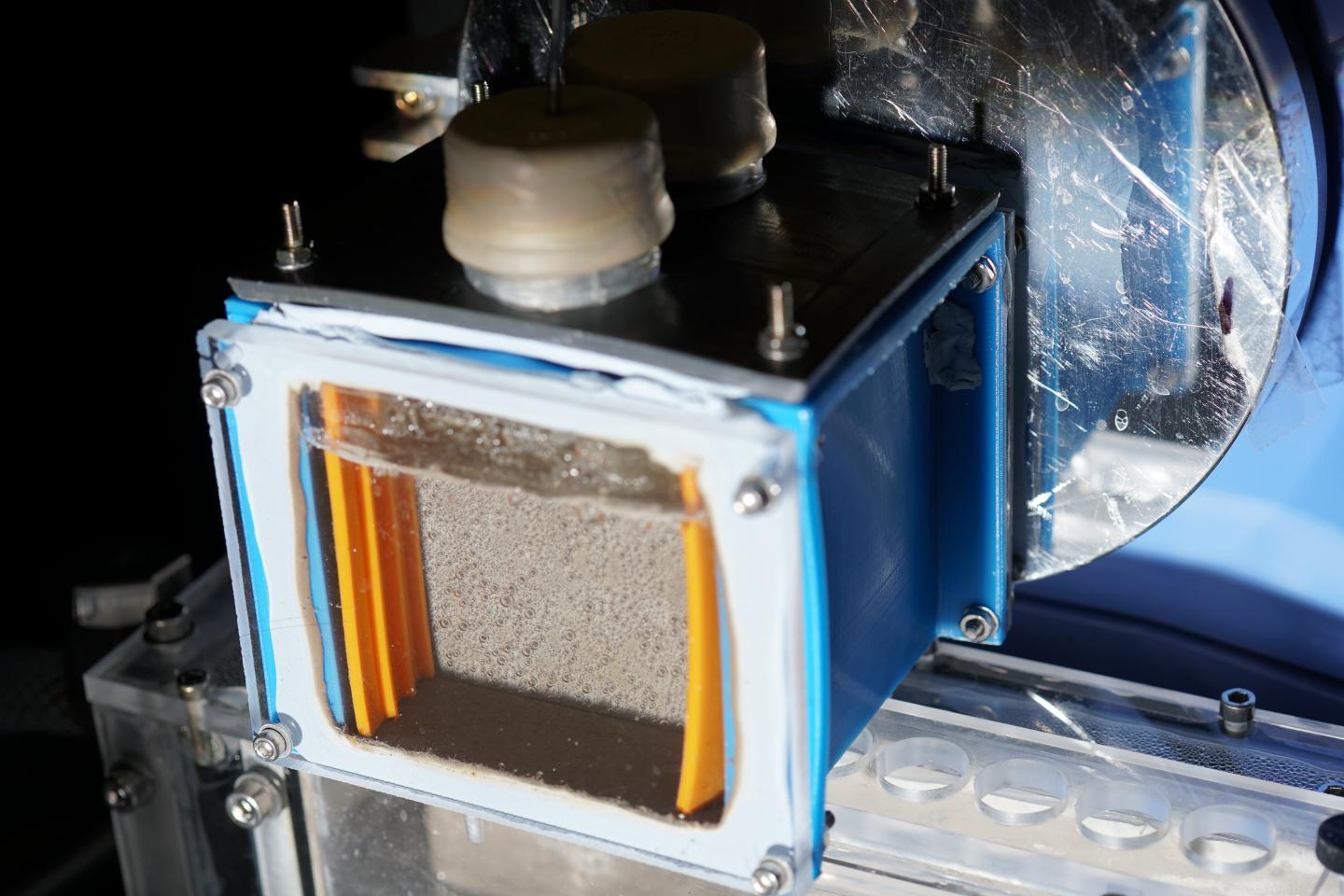
A new device that can produce carbon-neutral fuel marks a major breakthrough on the way to "artificial photosynthesis", according to the scientists who created it.
The standalone device can convert sunlight, carbon dioxide and water into clean energy, doing so wirelessly and without any outside electricity, the Cambridge researchers who built it say.
They hope that it can be a step towards using artificial devices to mimic photosynthesis, converting sunlight into energy in the same way plants do.
"It's been difficult to achieve artificial photosynthesis with a high degree of selectivity, so that you're converting as much of the sunlight as possible into the fuel you want, rather than be left with a lot of waste," said first author Dr Qian Wang from Cambridge's Department of Chemistry, in a statement.
The new device does so using "photosheet" technology. Out of it comes oxygen and formic acid, which can either be stored as a fuel or converted into hydrogen to provide clean energy.
"We want to get to the point where we can cleanly produce a liquid fuel that can also be easily stored and transported," said Erwin Reisner, the paper's senior author.
The test device created as part of the research is only 20 square centimetres. But the researchers say it should be relatively easy to scale it up to many square metres, allowing them to potentially be used in farms similar to the large fields of solar panels that are used to produce clean energy.
Previously, the same researchers had developed an "artificial leaf" that produced a fuel called syngas. But they ran into problems because the device required a range of different components, making it harder to scale up, and the fuel it produced was harder to work with.
The new device is easier to make and stays relatively stable, the researchers say, as well as producing a more reliable fuel and doing so in a more efficient way. But more work is required to make its production more efficient so that it could be produce in larger quantities, the researchers cautioned.
"We hope this technology will pave the way toward sustainable and practical solar fuel production," said Professor Reisner.
An article describing the discovery, 'Molecularly engineered photocatalyst sheet for scalable solar formate production from carbon dioxide and water', is published in Nature Energy today.







